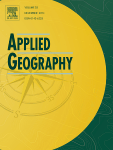2015 Publications
|
Author(s): West, S.E., A. Owen, K. Axelsson and C.D. West Year: 2015 In: Journal of Industrial Ecology, early view, online 16 November 2015 DOI: 10.1111/jiec.12372 Type: Journal article |
Evaluating the use of a carbon footprint calculator: Communicating impacts of consumption at household level and exploring mitigation options This article presents lessons learned from the development and application of a household-level carbon footprint calculator that embeds global emissions within a local context of behavioural change. Through an increasingly globalized supply chain, local consumption of goods and services has impacts around the world. The carbon footprint can be used to link local consumption to global greenhouse gas emissions. This study describes the development and use of REAP Petite, a household-level footprint calculator. The authors describe how the tool integrates geodemographic information with user-inputted data; allows users to compare their footprint with others in their community; and presents them with targeted pledges to help them reduce their impact. Such tools can help individuals to see the impact their consumption has on emissions and help promote alternative behaviours. Based on the lessons learned during tool development and through using the tool with individuals in the UK and Sweden, the authors make recommendations for the development of new footprinting tools for use in the public domain. They highlight the benefits of using bottom-up methods for calculating footprints; recommend that designers consider future-proofing their tools; discuss the trade-off between complexity and usability; and recommend that designers consider going “beyond carbon” to increase the appeal of tools to a wider audience. They also highlight the importance of providing opportunity for users to compare their footprints with those of others and of monitoring and evaluating user engagement with the tool.
|
|
Author(s): Cinderby, S., G. Haq, H. Cambridge, and K. Lock Year: 2015 In: Local Environment: The International Journal of Justice and Sustainability, online 5 November 2015 DOI:10.1080/13549839.2015.1100597 Type: Journal article |
Building community resilience: can everyone enjoy a good life? This paper describes lessons from the New Earswick Good Life Initiative, a participatory action research project to build community resilience in a low-income suburb of York, UK. Initiatives to reduce community carbon emissions and foster sustainable lifestyles have had varying degrees of success. There is now a need for a re-energized, concerted and joined-up approach that places environmental issues in a wider context – one that improves quality of life while building community resilience. This involves enhancing the capacity of neighbourhoods to recover, respond and adapt to environmental and socio-economic changes. This paper examines the experience gained in a participatory action research (PAR) study to build community resilience, where facilitators supported residents to take ownership of their own agendas. The New Earswick Good Life Initiative (GLI) was an 18-month project undertaken in a low-income suburb of York, UK. A range of approaches were used to identify activities which had the most potential to nurture resilience and foster a shift towards greater environmental sustainability. The GLI highlighted how the introduction of new ideas not only needs to be locally relevant but also requires care and time in order for them to embed within community. Altering the way a community manages its environment involves transforming social relationships, strengthening institutions and influencing local power balances. Furthermore, it is necessary to build social capital, knowledge, leadership skills and support social networks to allow communities to effectively engage with relevant local and national policies. Only by providing opportunities to develop these resilient attributes can increased local responsibility be successful. The paper concludes by providing guidance on strengthening community resilience and delivering pro-environmental behaviour change.
|
|
Author(s): de Bruin, A., R. Pateman, J. Barron, M. Balima, I. Ouedraogo, E. Da Dapola, M. Fosu, F. o. Annor, M. Magombeyi, J.-M. Kileshye Onema Year: 2015 In: Water Resources and Rural Development, in press, online 9 September 2015 DOI: 10.1016/j.wrr.2015.09.001 Type: Journal article |
Setting up Agricultural Water Management interventions – learning from successful case studies in the Volta and Limpopo river basins This paper explores agricultural water management (AWM) interventions in two African river basins, their impacts, and the factors contributing to their success. Long-term investments in agricultural water management (AWM) interventions in the Volta and Limpopo river basins have aimed at improving water availability and quality for smallholder farming systems. However, sustained and wider uptake of AWM technologies and approaches has not been as successful. We need to learn from successful AWM interventions, those interventions that have led to a sustained or increased uptake of AWM technologies or approaches, and which have led to improved well-being of farmers and livestock keepers in the rural development context of sub-Sahara Africa. This paper explores AWM interventions, specifically, the impacts these interventions have had and the factors contributing to the success of these interventions. In four countries within the Volta and Limpopo river basins, consultations were carried in 33 case studies of successful AWM interventions with implementing organisations and beneficiaries using a participatory GIS methodology. A systematic text analysis of 55 case study reports showed that these 33 interventions have had a positive impact on the well-being of beneficiaries and there was a sustained and wider uptake of the AWM technologies or approaches introduced. A clear demand for the technology, appropriate design of the technology, input support, training and capacity building, and a sense of ownership of the community helped to sustain the uptake of AWM technologies and approaches. We conclude that implementing organisations would benefit from investing in the soft components of an AWM intervention, as this will increase the likelihood of successful adoption and adaptation of the AWM technologies and approaches in the long-term.
|
|
Author(s): J. Whitelegg Year: 2015 In: 245 Pages. Straw Barnes Press. Available as an E-Book. Type: Book |
Mobility :A New Urban Design and Transport Planning Philosophy for a Sustainable Future This book sets out exactly what can be done to convert all towns and cities into attractive places in which to live and work. John Whitelegg argues for a complete transformation of how transport planning, as well as urban and rural planning, is dealt with in the UK citing best practice examples from other countries such as Zurich and Vienna's public transport system and Sweden's Vision Zero policy which has the aim of zero deaths and zero serious injuries in the road traffic environment. He also emphasises the importance of dealing with air pollution from traffic sources which kills over 40,000 each year in Britain and concludes that this is a massive failure of public policy and can and must be reduced to zero. The book presents a very different argument to the ones normally seen where local authorities and campaign groups try to increase walking and cycling. He suggests that whilst there is still scope to increase these very healthy and inexpensive means of moving around but only if we have serious polices to reduce traffic volume, create car-free streets and residential areas and have a total 20mph speed limit on all streets where people live. The need to reduce traffic volumes and traffic speeds is described in some detail and the book illustrates how this can be done on a short time scale and by following an inexpensive policy pathway. Traditional transport policy that does not focus seriously on traffic reduction is very expensive and the alternatives are much better for reducing the costs of running cities. E-Book available online. |
|
Author(s): Gouldson A., S. Colenbrander, A. Sudmant, F. McAnulla, N. Kerr, P. Sakai, S. Hall, E. Papargyropoulou and J.C. Kuylenstierna Year: 2015 In: Global Environmental Change, 35, 93–105 DOI:10.1016/j.gloenvcha.2015.07.009 Type: Journal article |
Exploring the economic case for climate action in cities This article provides the first detailed assessment of the economic case for cities to invest in low-carbon development.
|
|
Author(s): Rich, K.J., M. Ridealgh, S.E. West, S. Cinderby and M. Ashmore Year: 2015 In: PLoS ONE 10(8), e0136522 DOI:10.1371/journal.pone.0136522 Type: Journal article |
Exploring the Links between Post-Industrial Landscape History and Ecology through Participatory Methods This article highlights the role local knowledge can play in improving ecological interpretation of former mining sites which can then enhance future management plans to protect biodiversity. There is increasing recognition of the importance for local biodiversity of post-mining sites, many of which lie near communities that have suffered significant social and economic deprivation as the result of mine closures. However, no studies to date have actively used the knowledge of local communities to relate the history and treatment of post-mining sites to their current ecological status. This paper presents a study of two post-mining sites in the Yorkshire coalfield of the UK in which the local community were involved in developing site histories and assessing plant and invertebrate species composition. Site histories developed using participatory GIS revealed that the sites had a mixture of areas of spontaneous succession and technical reclamation, and identified that both planned management interventions and informal activities influenced habitat heterogeneity and ecological diversity. Two groups of informal activity were identified as being of particular importance. Firstly, there has been active protection by the community of flower-rich habitats of conservation value (e.g. calcareous grassland) and distinctive plant species (e.g. orchids) which has also provided important foraging resources for butterfly and bumblebee species. Secondly, disturbance by activities such as use of motorbikes, informal camping, and cutting of trees and shrubs for fuel, as well as planned management interventions such as spreading of brick rubble, has provided habitat for plant species of open waste ground and locally uncommon invertebrate species which require patches of bare ground. This study demonstrates the importance of informal, and often unrecorded, activities by the local community in providing diverse habitats and increased biodiversity within a post-mining site, and shows that active engagement with the local community and use of local knowledge can enhance ecological interpretation of such sites and provide a stronger basis for successful future management.
|
|
Author(s): West, S.E. Year: 2015 In: Journal Environmental Education Research, 21(1), 45-60 DOI:10.1080/13504622.2013.879695 Type: Journal article
|
Understanding participant and practitioner outcomes of environmental education This article presents research comparing the differences in the perspectives of practitioners and participants in environmental projects. Environmental education can deliver benefits to individuals, society and the environment, but few studies have asked practitioners or participants what they feel these benefits are. Using questionnaires, focus groups and participant observation, practitioners and participants listed a large number of outcomes, with increasing knowledge about the environment mentioned most frequently. For participants, this was often in relation to gaining new skills. Social outcomes, such as making new friends, were more prominent in participant than practitioner responses. Practitioners did not spontaneously mention any negative outcomes of environmental education, and few were suggested with prompting. Participants suggested more negative outcomes than practitioners, notably damage to the environment. The differing views suggest a need for greater discussion between practitioners and their participants. Read the article (external link to Journal website) |
|
Author(s): West, S.E. Year: 2015 In: Journal of Environmental Education, 46(1), 41–55 DOI:10.1080/00958964.2014.973351 Type: Journal article |
Evaluation, or Just Data Collection? An Exploration of the Evaluation Practice of Selected UK Environmental Educators This article examines how environmental educators evaluate their projects. Little research has been conducted into practices of evaluation, including who is evaluating, why they are evaluating, and the methods they use. Questionnaires and discussion groups with a convenience sample of UK-based practitioners were used to uncover their evaluation methods. Although many report that they are evaluating regularly, this is mainly monitoring numbers of participants or an assessment of enjoyment. There may be a difference between practitioners’ and evaluation experts’ understandings of what constitutes evaluation, with many practitioners appearing to see “data collection” and “evaluation” as synonymous. In addition, evaluators would not consider many of the methods used for data collection appropriate. More robust methods for collecting data and longer-term evaluations are often impractical for environmental educators to conduct themselves, and mechanisms are suggested for improving interaction between practitioners, researchers, and evaluators, which could enhance evaluation practice. Read the article (external link to Journal website) |
|
Author(s): Tidblad, J., K. Hicks, J.C.I. Kuylenstierna, B.B. Pradhan, P. Dangol, I. Mylvakanam, S.B. Feresu, and C. Lungu Year: 2015 In: Materials and Corrosion. Type: Journal article |
Atmospheric corrosion effects of air pollution on materials and cultural property in Kathmandu, Nepal This article presents the results of a case study of atmospheric corrosion exposures at 10 sites in Kathmandu, Nepal, in 2006-2007.
Read the article online (external link to journal website) |
|
Author(s): Ensor, J., and B. Harvey Year: 2015 In: WIREs Climate Change, online 22 June 2015 DOI: 10.1002/wcc.348 Type: Journal article |
Social learning and climate change adaptation: evidence for international development practice This article draws lessons from international practice on the use of social learning interventions for adaptation, including key principles, tools and methods, and approaches to evaluation.
Read the article (external link to journal) |
|
Author(s): Barron, J., E. Kemp-Benedict, J. Morris, A. de Bruin, D. Wang and A. Fencl Year: 2015 In: Water Resources and Rural Development, in press, online 15 June 2015 DOI: 10.1016/j.wrr.2015.06.001 Type: Journal article |
Mapping the potential success of agricultural water management interventions for smallholders: where are the best opportunities? This paper describes an innovative approach in decision support called Targeting Agricultural Water Management Interventions (TAGMI) that addresses the challenge of identifying appropriate interventions used to manage rainfall efficiently and productively in smallholder farming systems.
Read the article (external link to journal) |
|
Author(s): Pedoth, L., S. Jülich, R. Taylor, C. Kofler, N. Matin, J. Forrester, and S. Schneiderbauer Year: 2015 In: emBRACE case study (Deliverable 5.4) Type: Report |
Case study report: Alpine Hazards in South Tyrol (Italy) and Grison (Switzerland) This case study addresses the specific situation of alpine areas, where communities and valleys are typically prone to a range of natural hazards (avalanches, debris flows, landslides, rockfalls) at the same time.
Download the report (PDF, 7.95 MB) |
|
Author(s): Morris, J., Fraval, S., Githoro, E., Ran, Y., and Mugatha, S. Year: 2015 In: SEI Working Paper No. 2015-05 Type: Working paper |
Comprehensive Livestock Environmental Assessment for Improved Nutrition - PGIS Workshops Summary Report - Lushoto This report describes the results of a multi-stakeholder workshop that was organized in the Tanga region of Tanzania, in order to develop an overview of small-scale dairy systems in the Lushoto and Handeni districts.
Download the report (PDF, 3.3 MB) |
|
Author(s): Morris, J., Fraval, S., Githoro, E., Ran, Y., and Mugatha, S. Year: 2015 In: SEI-WP-2015-04 Type: Working paper |
Comprehensive Livestock Environmental Assessment for Improved Nutrition - PGIS Workshops Summary Report - Morogoro This report describes the results of a multi-stakeholder workshop organized in the Morogoro region of Tanzania, with the aim of developing an overview of small-scale dairy systems in the Kilosa and Mvomero districts.
Download the report (PDF, 4.7 MB) |
|
Author(s): Forrester, J., Cook, B., Bracken, L., Cinderby, S. and A. Donaldson Year: 2015 In: Applied Geography, Volume 56, January 2015, Pages 199–208 DOI:http://dx.doi.org/10.1016/j.apgeog.2014.11.019 Type: Journal article |
Combining participatory mapping with Q-methodology to map stakeholder perceptions of complex environmental problems It is readily accepted that understanding socio-environmental challenges requires consideration of multiple stakeholder perspectives and knowledge claims. But a largely ignored question is ‘how best to analyse those competing perspectives and claims?’ This paper explores the development of a GIS-based methodology and its application to understand and map stakeholder knowledge. The authors find that combining Q-methodology (a research method used to study people's "subjectivity"or viewpoint) with participatory mapping (gathering data using traditional methods such as interviews, questions, focus groups, all using some form of paper maps to allow participants to record spatial details) helps to overcome a significant problem in social engagement: representing the unclear connection between what people say or do and their underlying attitudes, values or beliefs. The paper is based on a reflexive engagement with flood management and natural adaptive capacity in the Scottish-English Borderlands. The paper confirms how such topics can benefit from an appreciation of the wide range of stakeholders' positions, as well as the underlying beliefs informing those positions and provides template for others interested in unpacking complex socio-environmental issues. |
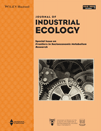

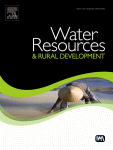



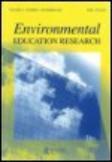
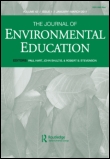

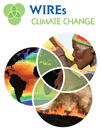
.gif)



